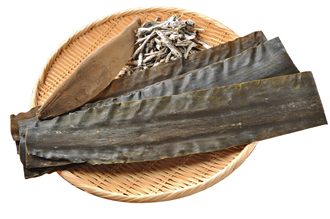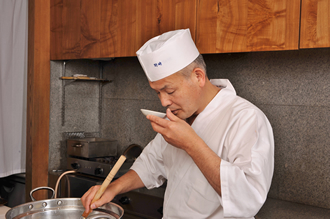niponica is a web magazine that introduces modern Japan to people all over the world.
2015 No.15
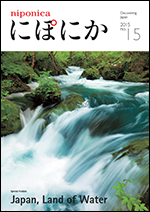
To read the e-book you need to have JavaScript enabled in your browser and a free Flash Player plug-in from Adobe Systems Inc. installed.
 Tasty Japan: Time to Eat!
Tasty Japan: Time to Eat!

Dashi Broth
It would be hard to imagine Japanese cuisine without it
Photos: Ito Chiharu Collaboration: Waketokuyama Restaurant
Washoku (traditional Japanese cuisine) is attracting more attention now that UNESCO has inscribed it on its Representative List of the Intangible Cultural Heritage of Humanity. At the heart of Washoku is dashi.
Dashi is a broth made by steeping any of a variety of dried foods in water to release their flavor. It is the base for suimono (clear soup) and misoshiru (miso soup), one of which is sure to be part of a traditional Japanese meal. Once the dashi is made, ingredients for the soup are added and simmered in it, and then seasoned with soy sauce or salt for suimono, miso for miso soup. Simmered dishes also start off with dashi, with vegetables and perhaps seafood or meat put in later, and seasoning generally added when the simmering is done.
As for the dashi itself, the most common ingredients used to make it are a type of seaweed called kombu (kelp) and shavings of katsuo-bushi (bonito fish that has been heated to dry it). Kombu contains glutamic acid, while katsuo-bushi has inosinic acid, and combining the two gives the broth a denser, richer flavor. Other items often used to make dashi are niboshi (small dried sardines) and dried shiitake mushrooms. Because only dried foods are used and fat is excluded, dashi is different from the soup stock made in Western kitchens or the tang stock of Chinese cuisine.
Nobody knows what ingredients were first used to make dashi, or when it was first made. But we do know that a cookbook written around the 15th century mentions both kombu seaweed and dried shaved bonito fish. By the second half of the 17th century, it appears to have become common to combine the two.
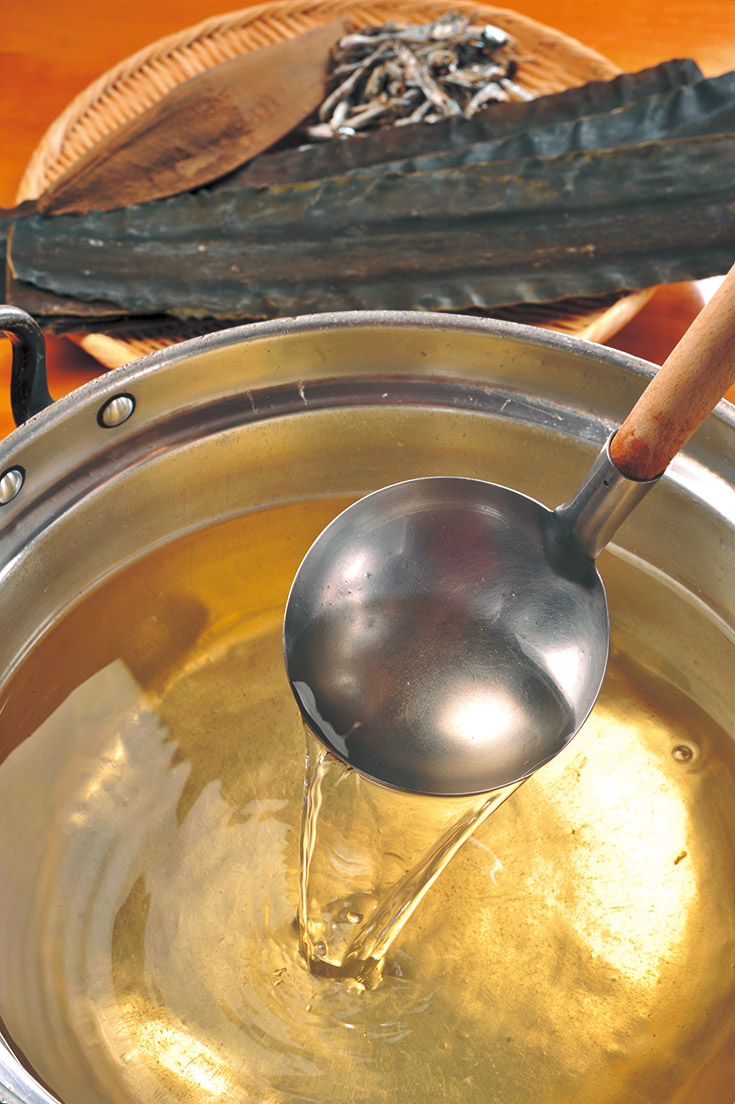
Water in Japan tends to be soft, and the water used to make this dashi broth was certainly no exception. The large pot holds plenty of dashi, which concentrates the delectable flavors of the ingredients.
How to make dashi depends on the ingredients. Katsuo-bushi shavings are added to the water after it begins to boil, then removed after a few minutes. Kombu seaweed, niboshi fish and dried shiitake mushrooms are generally steeped in cold water first, although after that you have a choice, depending on the meal you are planning—either bring the temperature up and simmer, or take these ingredients out before heating the water. Some recipes call for them to be left in cold water a few minutes, others specify overnight. Methods vary because water in Japan tends to be soft, which means that the nutrients, taste and fragrance are released more easily than with hard water.
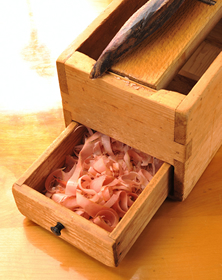
Katsuo-bushi (dried bonito fish) is shaved with a blade on top of a box specially designed for the purpose. Run the dried fish back and forth over the blade, and the flakes will fall into the drawer below, ready to use.
Another point: if you do simmer the food items, you should generally simmer them for only a very short time. Chefs frown on the thick, cloudy dashi that comes from simmering them too long. In some cases you can use the same ingredients to make several batches of dashi. The first time (ichiban dashi) gives plenty of flavor and avoids distracting tastes, making it good for suimono. The second time (ni-ban dashi) makes a broth good for simmered dishes.
Nozaki Hiromitsu is the Executive Chef at Waketokuyama, a premier Tokyo restaurant specializing in traditional cuisine. He explains: “One specialty of traditional Japanese cuisine is the light flavors, letting us savor the actual taste of the ingredients. For example, when we make suimono clear soup, as soon as we shave a katsuo-bushi block we drop the shavings in the water, because otherwise we’d get an inferior taste. For our simmered dishes, we make a light dashi to highlight the taste of the ingredients. It’s important to strike a balance, to avoid getting a dashi that is too weak and one that it so strong it hides the taste of the ingredients.”
The fragrance wafting from dashi in the pot is one of the defining tastes of Washoku. The topography of Japan tends to make the water soft. Dashi made from that water has a taste that is complex yet delectably light at the same time. It would be difficult to imagine Washoku without it.



